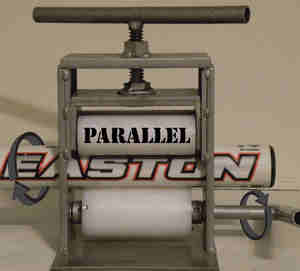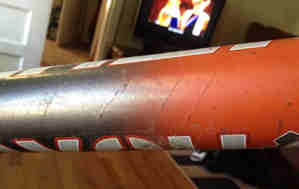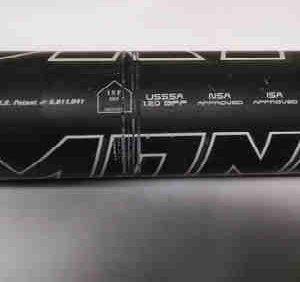Bat Rolling: Unveiling the Accelerated Break-In Technique
While the consensus is clear on the performance enhancement derived from prolonged use of a composite bat, not everyone is acquainted with the rapid bat break-in process known as "bat rolling." This method expedites the bat break-in, referred to as ABI (accelerated break-in), ensuring a quicker readiness for optimal performance. In a new composite bat, layers of fibers are bound together by resin. The application of pressure, either through striking a ball or utilizing the bat rolling method, prompts the resin to break down.
The bat is meticulously positioned between three rollers – two upper rollers and one lower roller. Despite common references to two rollers, those who engage in bat rolling distinguish the critical role of all three. A handle atop the bat rolling machine allows the operator to crank down the top two rollers, applying the necessary pressure. The side handle facilitates the bat's passage through the rollers, either perpendicular or parallel to achieve an even result.

The pressure levels are calibrated by the roller operator or referenced from a bat rolling guide. After the bat completes its rotation through the rollers, the composite fibers undergo a transformation, becoming more pliable and flexible. This heightened flexibility generates a trampoline effect upon impact with a batted ball, propelling it with increased force. Additionally, the stretching and breaking down of resin fibers contribute to an expanded sweet spot on the bat.

Addressing Common Questions on Bat Rolling:
-
Does bat rolling prove effective? Various informal studies on platforms like YouTube and other websites consistently report a batted ball distance increase ranging from 20 to 40 feet. While I acknowledge these figures, personal experiences have indicated even more substantial gains, with some bats exhibiting up to a 50-foot increase. The lone scientific study on bat rolling, conducted in 2005 by Daniel Russell, PhD, corroborated these findings, demonstrating a 20-35 feet improvement over unaltered bats under comparable conditions. It's crucial to note that each composite bat responds uniquely to the bat rolling process, influenced by manufacturing variations and barrel characteristics.
-
Is bat rolling against the rules? While not classified as a criminal offense, engaging in bat rolling can lead to ejection from sanctioned games or tournaments. All major associations, including ASA, USSSA, USA Baseball, NSA, and Little League, explicitly prohibit bat alterations, encompassing practices such as bat rolling, shaving, end loading, or any modification unrelated to ball impact. Despite its illegality, bat rolling is not universally condemned within baseball and softball communities, often viewed akin to breaking in a new glove for enhanced performance.

-
Can bat rolling be detected? As of now, there is no specific device or tool dedicated to detecting bat rolling. Compression testers, measuring pounds of pressure per square inch, are the closest approximation, with associations establishing limits on allowable bat pressure. A bat excessively broken in might fall below the minimum psi threshold and be deemed illegal, although instances of this are rare. Keen umpires, coaches, or league directors may visually inspect bats for signs of rolling, such as roller marks parallel or perpendicular to the bat's surface. Seasoned bat rollers, however, typically take measures to avoid leaving such discernible marks.


